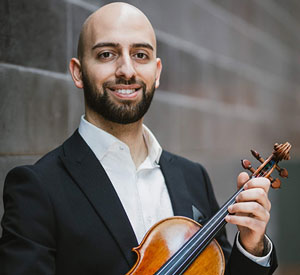
Born in Los Angeles, Jonathan started his violin studies at seven and gave his first solo recital at the age of eleven. He earned a M.Mus. in violin performance studying with renowned violinist Ilya Kaler and has performed with orchestras including the Winnipeg Symphony, Chicago Civic Orchestra, and London Symphonia.
Beethoven Minuet in G from Suzuki Violin Book 2
Technical Aspect:
- Key Signature & Time Signature
- Fingerings
- Bowings
Musical Aspect
- Tempo
- Dynamics & Phrasing
- Articulation
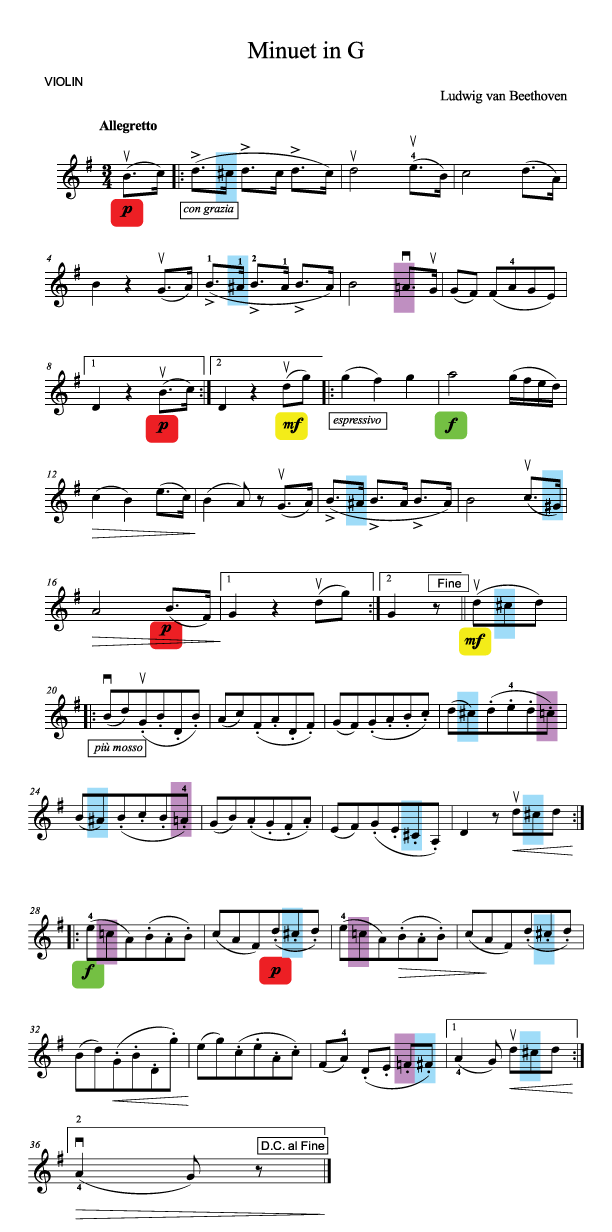
Download the PDF for Minuet in G by Beethoven here.
Technical Aspect of Playing Minuet in G:
1) Identifying the key signature is one of the first steps when sight-reading a new piece. This Minuet is written in G major, which means we must remember to play F-sharp throughout the piece. The next step would be to observe the accidentals that occur in the piece of which we have A-sharp, G-sharp, and C-sharp (purple highlight), and the naturals A, C and F (blue highlight).
The time signature is ¾, meaning we have 3 quarter note beats to the bar. The main rhythmic figures in this work are dotted rhythms and eighth notes. Every entrance also begins with a pick-up gesture approximately the length of a quarter note beat. Having a clear idea of the main rhythmic groups in a piece helps us to organize phrases.
2) Fingerings are a very personal decision on the violin. One’s choices and preferences for a certain fingering can depend on their current technique level, the size of their hand, their comfort with shifting, and the agility and dexterity of their fingers. One example is in bar 5 where we have the choice of sliding our first finger down from B to A-sharp, or to simply place the second finger on B to avoid the slide and be in half-position right away. Another option would be to start the pick up into bar 5 in 3rd position, which may be an easier hand shape to feel for some people as the half steps between B and A-sharp would be played with the 2nd and 3rd fingers. In bar 33, once again, we have 2 options, we can play the F-sharp with the 2nd or 3rd finger. The most effective way to decide would be to play both fingering options back to back at the right tempo and see what feels more comfortable instinctively. Trust your intuition on this one!
3) Just like fingerings, bowings are also a personal preference; however, in this Minuet, our options are quite straightforward, and the written bowings are the most standard. This leads to the issue of bow distribution. The first full bar is written as one long slur and so it would be helpful to start the opening in the lower half of the bow in order to have the full bow to play the long slur with accented notes. In the Trio section, we have a bowing pattern of 2 slurred notes and 4 up-bow staccato notes. To execute this effectively, it is best to play the 2 note slur in the upper half of the bow, which allows us to start the 4 up bow staccato notes at the tip of the bow and give 4 equal lengths of the bow from the tip to the middle of the bow to keep things consistent and in control. In the 2nd half of the trio, when the dynamic range extends to Forte, I like to use a full bow on the 3 note slurs and staccatos, and a quarter of the bow when it becomes piano.
Musical Aspect of Playing Minuet in G:
1) Deciding the “right” tempo can often be a tricky task as there is not one correct speed to play a piece. This is the beauty of music as we can hear so many convincing interpretations that are very different from each other. Of course, the tempo marking of “Allegretto” gives us an indication that it should be played “fairly briskly”, but even then, this can sound vague at times. I find that the most natural way to find the tempo is to simply sing or hum it. Usually, the way we sing something is exactly how we intend to play it as well. Another method I like to use is to look later on in the piece and identify the most difficult or fastest section. Once you establish the speed at which you can play those parts well, you may transfer that same tempo to the rest of the piece since this is what works best for you personally. Finally, using the metronome can be our guide to keep things consistent or confirm our speed throughout.
2) An excellent habit to develop is to become familiar with all the musical markings in a piece, in this Minuet we have the following:
Allegretto
Con Grazia
Espressivo
Piu Mosso
D.C al Fine
Fine
Each of these give clues towards the types of phrases we want to build.
Furthermore, knowing the full dynamic range is an essential step when deciding how to gauge our loudest and softest playing. For example, if you are a visual learner, it may help to highlight dynamics with different colours, i.e. Forte’s can be Green, Piano’s can be Red, Mezzo Forte’s Yellow. Etc. Dynamics are always relative, and so by having a real sense of what your Forte will sound like, you can then know how much of a contrast the Piano’s will be each time. Finally, being very diligent with marked crescendos and diminuendos can be a real test of our musicianship. Too often, players will see a crescendo marking and start playing louder much earlier than what is written.
3) Perhaps the musical aspect of playing, which has the most variety and nuance, is the subject of articulation. In this Minuet, we have slurred notes, accents written under slurs, staccato written under slurs and a dash on the quarter note in bar 9. My approach towards the accents is to bring them out with energetic impulses of vibrato in the left hand. I also combine the left-hand vibrato with changes of bow speed, and these two elements together make the accents come to life. In the trio section, one interpretive decision is to see how long or short we want to make the up-bow staccato notes. Generally, the shorter and crisper the staccato, the bouncier and livelier the character will seem. Longer and smoother staccatos can also sound pleasant but will be more laid back in feel and may also be harder to play cleanly.
Ok, that’s it for now. Check back often for more violin lessons and tips and vote in the poll below to see the results.
[yop_poll id=”6″]
Fiddle Tab – Traditional Collection
Can’t read music? Try Fiddle Tab. A fun and easy way to learn traditional fiddle tunes.
Fiddle Tab – Holiday Collection
“Fiddle Tab Holiday Classics” 30-holiday classics for violin/fiddle with big letter notes and easy read tablature. How to read tab and fingerboard charts included. Also, guitar chords and lyrics to sing along. Perfect for beginners and the visually impaired.
Fiddle Tab – Celtic Collection
Can’t read music? Try Fiddle Tab. A fun and easy way to learn Celtic fiddle tunes with easy-to-read fiddle tablature with big notes with letters inside. 30 of the most requested Celtic session tunes – jigs, reels, hornpipes, and waltzes. Great for beginners and visually impaired. below.
30 Celtic Fiddle Tunes with Easy Read Tablature and Notes.
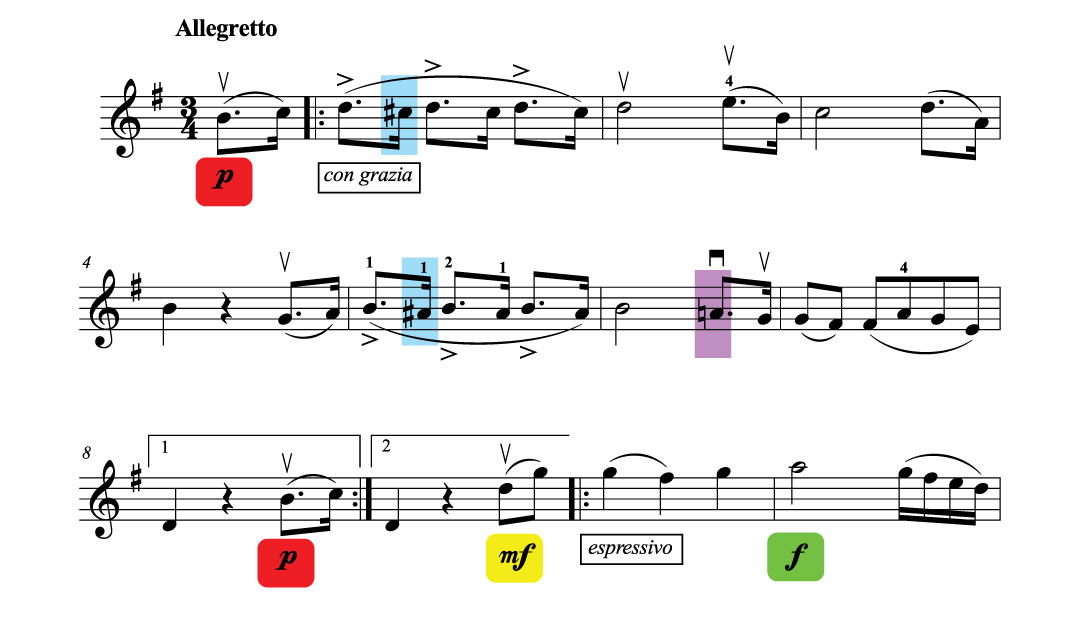
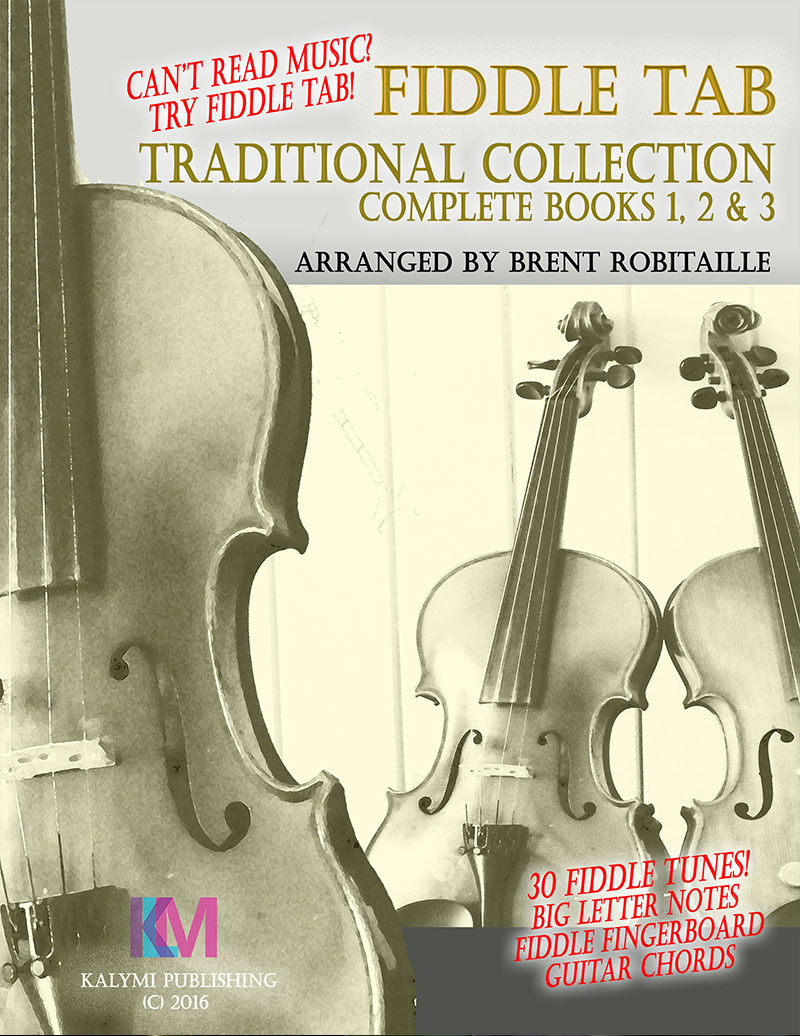
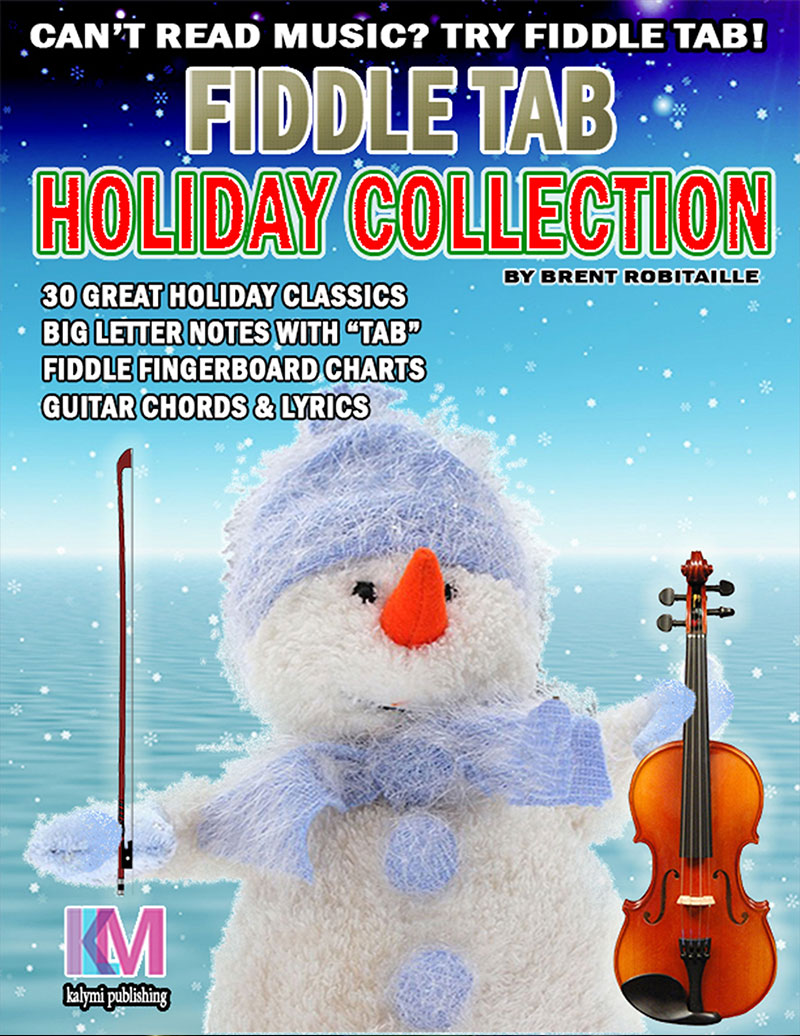
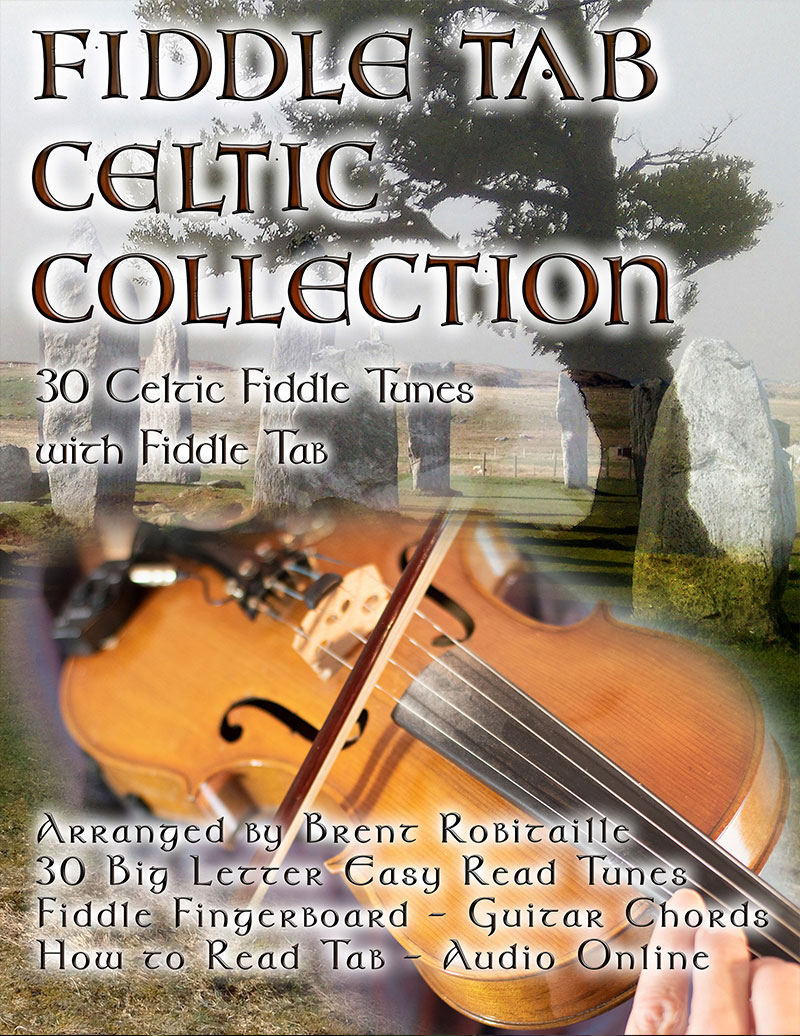
Recent Comments